28-port Gigabit Stackable Managed Switch Cisco SG500-28-K9-G5
12,960,000 ₫
– 24-port GB + 4 Gigabit Ethernet (2 combo* Gigabit Ethernet + 2 1GE/5GE SFP).
– Performance: Switching capacity 72 Gbps.
– Stacking: Up to 8 units in a stack. Up to 416 ports managed as a single system with hardware failover.
– Support Layer 3 (refer datasheet for more detail).
- Bán hàng: O9O842O111
- Kinh doanh: O2837242O99
- Sales@congnghequansat.com
- Mua số lượng: O2837242O99
- Dự Án: O2837242O99
- Kinhdoanh@congnghequansat.com
28-port Gigabit Stackable Managed Switch Cisco SG500-28-K9-G5
– 24-port GB + 4 Gigabit Ethernet (2 combo* Gigabit Ethernet + 2 1GE/5GE SFP).
– Performance: Switching capacity 72 Gbps.
– Stacking: Up to 8 units in a stack. Up to 416 ports managed as a single system with hardware failover.
– Support Layer 3 (refer datasheet for more detail).
– QoS: Priority levels 4 : hardware queues, Scheduling: Priority queuing and weighted round-robin (WRR), Queue assignment based on DSCP and class of service (802.1p/CoS).
Performance
Switching capacity and forwarding rate (64-byte packets)
41.67
Switching Capacity (Gbps)
72
Layer 2 Switching
Spanning Tree Protocol
Standard 802.1d Spanning Tree Support
Fast convergence using 802.1w (Rapid Spanning Tree [RSTP]), enabled by default
Multiple spanning tree instances using 802.1s (MSTP). 16 instances are supported
Port grouping/link aggregation
Support for IEEE 802.3ad Link Aggregation Control Protocol (LACP)
• Up to 8 groups
• Up to 8 ports per group with 16 candidate ports for each (dynamic) 802.3ad LAG
VLAN
Support for up to 4096 VLANs simultaneously
Port-based and 802.1Q tag-based VLANs
MAC-based VLAN
Management VLAN
PVE (Private VLAN Edge), also known as Protected Port, with multiple uplinks
Guest VLAN
Unauthenticated VLAN
Protocol-based VLAN
CPE VLAN
Voice VLAN
Voice traffic is automatically assigned to a voice-specific VLAN and treated with appropriate levels of QoS. Auto voice capabilities deliver network-wide zero touch deployment of voice endpoints and call control devices.
Multicast TV VLAN
Multicast VLAN used for video applications.
Q-in-Q
VLANs transparently cross over a service provider network while isolating traffic among customers.
GVRP/GARP
Generic VLAN Registration Protocol (GVRP) and Generic Attribute Registration Protocol (GARP) enable automatic propagation and configuration of VLANs in a bridged domain.
DHCP Relay at Layer 2
Relay of DHCP traffic to DHCP server in a different VLAN. Works with DHCP Option 82.
IGMP (versions 1, 2, and 3) snooping
Internet Group Management Protocol (IGMP) limits bandwidth-intensive multicast traffic to only the requesters;supports 1000 multicast groups (source-specific multicasting is also supported).
IGMP querier
IGMP querier is used to support a Layer 2 multicast domain of snooping switches in the absence of a multicast router.
HOL blocking
Head-of-line (HOL) blocking.
Layer 3
IPv4 routing
Wirespeed routing of IPv4 packets
Up to 128 static routes and up to 128 IP interfaces
CIDR
Support for Classless Inter-Domain Routing
RIP v2 (on 500X)
Support for Routing Information Protocol version 2, for dynamic routing
VRRP (on 500X)
Virtual Router Redundancy Protocol (VRRP) delivers improved availability in a Layer 3 network by providing redundancy of the default gateway servicing hosts on the network. VRRP versions 2 and 3 are supported. Up to 255 virtual routers are supported.
DHCP Relay at Layer 3
Relay of DHCP traffic across IP domains.
User Datagram Protocol (UDP) Relay
Relay of broadcast information across Layer 3 domains for application discovery or relaying of BOOTP/DHCP packets.
Stacking
Hardware stack
Up to 200 ports managed as a single system with hardware failover.
High availability
Fast stack failover delivers minimal traffic loss.
Plug-and-play stacking configuration/management
Master/backup for resilient stack control
Auto-numbering
Hot swap of units in stack
Ring and chain stacking options
Auto stacking port speed
Flexible stacking port options
High-speed stack interconnects
Cost-effective 5G copper and high-speed 10G Fiber and Copper interfaces.
Mixed stacking support
A stack can consist of a mix of SF500 and SG500 models (mix of 10/100 and Gigabit in the same stack).
Hybrid stack (future)
A mix of SF500, SG500, and SG500X in the same stack (10/100, Gigabit, and 10 Gigabit).
Security
SSH
Secure Shell (SSH) Protocol secures Telnet traffic to and from the switch. SSH versions 1 and 2 are supported.
SSL
Secure Sockets Layer (SSL) encrypts all HTTPS traffic, allowing secure access to the browser-based management
UI in the switch. IEEE 802.1X (Authenticator role)
RADIUS authentication and accounting, MD5 hash, guest VLAN, unauthenticated VLAN, single/multiple host mode and single/multiple sessions
Supports time-based 802.1X
Dynamic VLAN assignment
STP BPDU Guard
A security mechanism to protect the networks from invalid configurations. A port enabled for Bridge Protocol Data unit (BPDU) Guard is shut down if a BPDU message is received on that port.
STP Root Guard
Prevents a port from being selected as a root port, effectively preventing bridges in the LAN segment connected to the port from being a root bridge.
DHCP snooping
Filters out DHCP messages with unregistered IP addresses and/or from unexpected or untrusted interfaces.
IP Source Guard (IPSG)
When IP Source Guard is enabled at a port, the switch filters out IP packets received from the port if the source IP addresses of the packets have not been statically configured or dynamically learned from DHCP snooping.
Dynamic ARP Inspection (DAI)
The switch discards ARP packets from a port if there is no static or dynamic IP/MAC bindings or if there is a discrepancy between the source or destination address in the ARP packet.
Secure Core Technology (SCT)
Ensures that the switch will receive and process management and protocol traffic no matter how much traffic is received.
Layer 2 isolation (PVE) with community VLAN*
Provides Layer 2 isolation between devices in the same VLAN; supports multiple uplinks.
Port security
Ability to lock MAC addresses to ports, and limit the number of learned MAC addresses.
RADIUS/TACACS+
Supports RADIUS and TACACS authentication. Switch functions as a client.
RADIUS accounting
The RADIUS accounting functions allow data to be sent at the start and end of services, indicating the amount of resources (such as time, packets, bytes, and so on) used during the session.
Storm control
Broadcast, multicast, and unknown unicast.
DoS prevention
DoS attack prevention.
Congestion avoidance
A TCP congestion avoidance algorithm is required to minimize and prevent global TCP loss synchronization.
Multiple user privilege levels in CLI
Levels 1, 7, and 15 privilege levels.
Quality of Service
Priority levels
4 hardware queues (8 future)
Scheduling
Strict Priority and weighted round-robin (WRR)
Class of service
Port based; 802.1p VLAN priority based; IPv4/v6 IP precedence/ToS/DSCP based; DiffServ; classification and re-marking ACLs, Trusted QoS
Queue assignment based on differentiated services code point (DSCP) and class of service (802.1p/CoS)
Rate limiting
Ingress policer; egress shaping and ingress rate control; per VLAN, per port, and flow based
IPv6
IPv6
IPv6 Host Mode
IPv6 over Ethernet
Dual IPv6/IPv4 stack
IPv6 Neighbor and Router Discovery (ND)
IPv6 Stateless Address Autoconfiguration
Path MTU Discovery
Duplicate Address Detection (DAD)
ICMPv6
IPv6 over IPv4 network with ISATAP tunnel support
USGv6 and IPv6 Gold Logo certified
IPv6 QoS
Prioritize IPv6 packets in hardware
IPv6 ACL
Drop or Rate Limit IPv6 packets in hardware
MLD Snooping
Deliver IPv6 multicast packets only to the required receivers
IPv6 applications
Web/SSL, Telnet Server/SSH, Ping, Traceroute, SNTP, TFTP, SNMP, RADIUS, Syslog, DNS client
IPv6 RFC supported
RFC 2463 – ICMPv6
RFC 3513 – IPv6 Address Architecture
RFC 4291 – IP Version 6 Addressing Architecture
RFC 2460 – IPv6 Specification
RFC 2461 – Neighbor Discovery for IPv6
RFC 2462 – IPv6 Stateless Address Auto-configuration
RFC 1981 – Path MTU Discovery
RFC 4007 – IPv6 Scoped Address Architecture
RFC 3484 – Default address selection mechanism
RFC 4214 – ISATAP tunneling
RFC 4293 – MIB IPv6: Textual Conventions and General Group
RFC 3595 – Textual Conventions for IPv6 Flow Label
Management
Web user interface
Built-in switch configuration utility for easy browser-based device configuration (HTTP/HTTPS). Supports configuration, system dashboard, system maintenance and monitoring.
SNMP
SNMP versions 1, 2c, and 3 with support for traps, and SNMP v3 User-based Security Model (USM)
RMON
Embedded RMON software agent supports 4 RMON groups (history, statistics, alarms, and events) for enhanced traffic management, monitoring, and analysis
IPv4 and IPv6 Dual Stack
Coexistence of both protocol stacks to ease migration
Firmware upgrade
Web browser upgrade (HTTP/HTTPS) and Trivial File Transfer Protocol (TFTP)
Upgrade can be initiated through console port as well
Dual images for resilient firmware upgrades
Port mirroring
Traffic on a port can be mirrored to another port for analysis with a network analyzer or RMON probe. Up to 8 source ports can be mirrored to one destination port.
VLAN mirroring
Traffic from a VLAN can be mirrored to a port for analysis with a network analyzer or RMON probe. Up to 8 source LANs can be mirrored to one destination port.
DHCP (Options 66, 67, 82, 129, and 150)
DHCP options facilitate tighter control from a central point (DHCP Server), to obtain IP address, auto configuration with configuration file download, and DHCP relay.
Autoconfiguration with Secure Copy (SCP) file download
Enables secure mass deployment with protection of sensitive data.
Text-editable configs
Config files can be edited with a text editor and downloaded to another switch, facilitating easier mass deployment.
Smartports
Simplified configuration of QoS and security capabilities.
Auto Smartports
Automatically applies the intelligence delivered through the Smartports roles to the port based on the devices discovered over Cisco Discovery Protocol or LLDP-MED. This facilitates zero touch deployments.
Cisco Configuration Assistant Management
Manage devices from Cisco Configuration Assistant Management application.
Secure Copy (SCP)
Securely transfer files to and from the switch.
Textview CLI
Scriptable CLI. A full CLI as well as a menu CLI is supported.
Cloud Services
Support for Cisco Small Business FindIT network discovery utility.
Localization
Localization of GUI and documentation into multiple languages.
Login banner
Configurable login banners for web as well as CLI.
Time-based port operation
Link up or down based on user-defined schedule (when the port is administratively up).
Other management
Traceroute; single IP management; HTTP/HTTPS; SSH; RADIUS; port mirroring; TFTP upgrade; DHCP client; OOTP; Simple Network Time Protocol (SNTP); Xmodem upgrade; cable diagnostics; Ping; syslog; Telnet client (SSH secure support); Automatic time settings from Management Station.
Green (Power Efficiency)
Energy Detect
Automatically turns power off on Gigabit Ethernet RJ-45 port when detecting link down.
Active mode is resumed without loss of any packets when the switch detects the link is up.
Cable length detection
Adjusts the signal strength based on the cable length. Reduces the power consumption for cable shorter than 10m. supported on Gigabit Ethernet models.
EEE compliant (802.3az)
Supports IEEE 802.3az on all Gigabit copper ports.
General
Jumbo frames
Frame sizes up to 10K. Bare supported on 10/100 and Gigabit Ethernet interfaces.
The default MTU is 2K.
MAC table
16,000 MAC addresses.
Discovery
Bonjour
The switch advertises itself using the Bonjour protocol.
LLDP (802.1ab) with LLDP-MED extensions
Link Layer Discovery Protocol (LLDP) allows the switch to advertise its identification, configuration, and capabilities to neighboring devices that store the data in a MIB. LLDP-MED is an enhancement to LLDP that adds the extensions needed for IP phones.
Cisco Discovery Protocol
The switch advertises itself using the Cisco Discovery Protocol (CDP). It also learns the connected device and its characteristics via CDP.
Product Specifications
Power Consumption/ Energy Detect
110V/0.226A/13.7W
220V/0.160A/14.8W
Heat Dissipation (BTU/hr)
46.5
Ports
28 10/100/1000 + 4 GE (5G Stacking)
Buttons
Reset button
Cabling type
Unshielded twisted pair (UTP) Category 5 or better; Fiber options (SMF and MMF); Coaxial SFP+ for stacking purposes
LEDs
System, Link/Act, PoE, Speed
Flash
32 MB
800 MHz ARM CPU memory
256 MB
Packet Buffer
8Mb
Unit Dimensions (W x H x D)
440 x 44 x 257 mm
Unit weight
3.09 kg
Power
100-240V 47-63 Hz, internal, universal
Certification
UL (UL 60950), CSA (CSA 22.2), CE mark, FCC Part 15 (CFR 47) Class A
Temperature
Operating temperature
32° to 104°F (0° to 40°C)
Storage temperature
-4° to 158°F (-20° to 70°C)
Operating humidity
10% to 90%, relative, noncondensing
Storage humidity
10% to 90%, relative, noncondensing
Package Contents
Cisco Small Business SG500-28 Stackable Managed Switch
Power cord
Mounting hardware
Serial cable
CD-ROM with user documentation (PDF) included
Quick Start Guide
Minimum Requirements
Web browser: Mozilla Firefox version 3.6 or later; Microsoft Internet Explorer version 7 or later
Category 5 Ethernet network cable
TCP/IP, network adapter, and network operating system (such as Microsoft Windows, Linux, or Mac OS X) installed.
Bảo hành: 12 tháng.
Sản phẩm tương tự
Không có bình luận nào


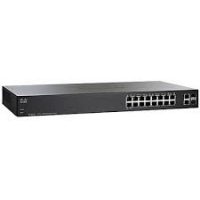

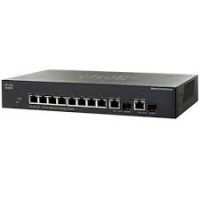
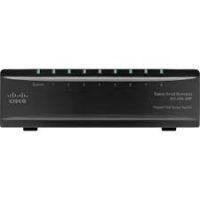
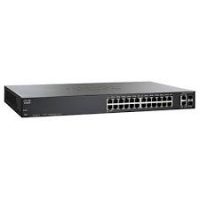
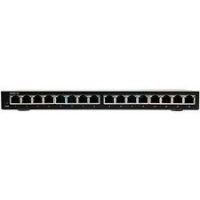

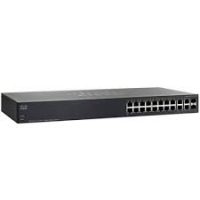
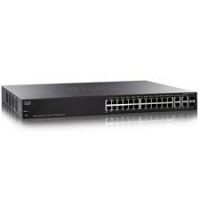
Chưa có đánh giá nào.